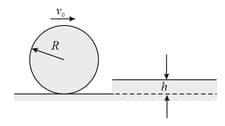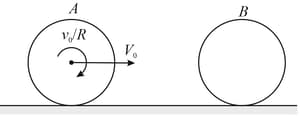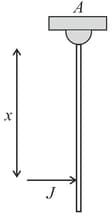B M Sharma Solutions for Chapter: Rigid Body Dynamics II, Exercise 5: DPP 3.5
B M Sharma Physics Solutions for Exercise - B M Sharma Solutions for Chapter: Rigid Body Dynamics II, Exercise 5: DPP 3.5
Attempt the free practice questions on Chapter 3: Rigid Body Dynamics II, Exercise 5: DPP 3.5 with hints and solutions to strengthen your understanding. Chapterwise/Topicwise Daily Practice Problems (DPP) Mechanics - II JEE Main & Advanced solutions are prepared by Experienced Embibe Experts.
Questions from B M Sharma Solutions for Chapter: Rigid Body Dynamics II, Exercise 5: DPP 3.5 with Hints & Solutions
A uniform solid sphere of radius is rolling without sliding on a horizontal surface with a velocity . It collides with an obstacle of height inelastically. Find the angular speed of the sphere just after the collision.

A hollow smooth uniform sphere of mass rolls without sliding on a smooth horizontal surface. It collides elastically and head-on with another stationary smooth solid sphereof the same mass and same radius. The ratio of kinetic energy of to that of just after the collision is:

A uniform rod of mass and length is at rest on a smooth horizontal surface. An impulse is applied to the end perpendicular to the rod in a horizontal direction. Speed of particle at a distance from the centre towards of the rod after time, is
A uniform rod of length is pivoted at point . It is struck by a horizontal force which delivers an impulse at a distance from point as shown in the figure. The impulse delivered by pivot is zero if is equal to,

A homogenous rod of length, and mass is lying on a smooth horizontal floor. A bullet of mass hits the rod at a distance from the middle of the rod at a velocity perpendicular to the rod and comes to rest after the collision. If the velocity of the farther end of the rod just after the impact is in the opposite direction of , then,
